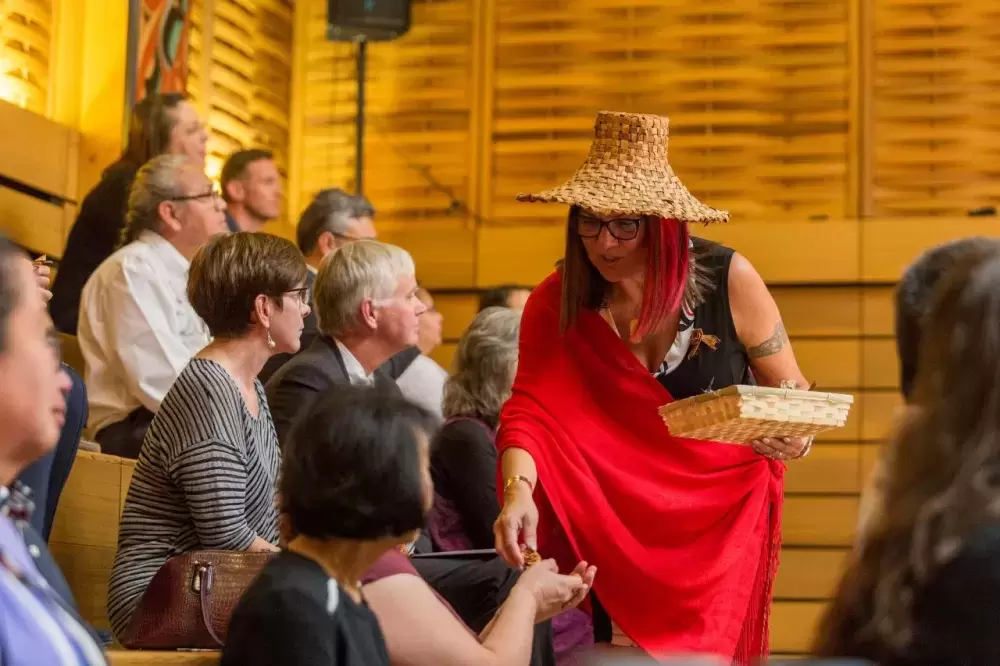For the first time in its history the University of Victoria has developed a strategic “Indigenous plan” for its First Nations students. The plan lays out a course of action for the next five years, and was developed over the past two years, by the associate vice-president of academic planning, the director of indigenous and community engagement, as well as various members of staff and students.
UVic saw a 52 per cent increase in Indigenous student enrollment over the previous decade, making them about five per cent of the total student population - so the plan is both timely, and much needed. Over the past five years Indigenous enrollment has risen by 33 per cent.
"It’s our first plan, and for me what it signals is our long-standing commitment to, and relationships with local Indigenous people, but also all Indigenous people in B.C. and Canada,” said Dr. Robina Thomas, the Director of Indigenous and Community engagement.
“What I love about this plan is… We do cedar. We talk about cedar, which was so critical to coastal people… And the thing is, in and of itself, it’s not that strong, but when you weave it together you have something that is profoundly strong and sustainable,” she added.
Dr. Thomas is referring to the symbolism which helped form the basis of the plan. The entire outline parallels what it is like to work with five strands of cedar, when weaving items such as baskets, for example. In the introduction to the full plan document—available online now—the university writes “working with cedar is working together, and knowing that at all stages we must work with a good mind and a good heart, always remembering our teachings, our birthright and our ancestors.” It then goes on to say, “pulling together” the strands of cedar is purposeful, and the university has “woven together” their plan using multiple angles and sources.
The five strands of cedar within the Indigenous plan become five key areas which the university will address. Strand 1 is students, Strand 2 is faculty and staff, Strand 3 represents education, Strand 4 is research and Strand 5 is governance. And within each strand, there is anywhere from one to five key “goals and actions.”
“So, we have this metaphor of weaving, and the other critical piece is the role of elders… elders are a part of every bit of the plan,” said Dr. Thomas. “Page nine starts with some teachings, because it’s really important we do the best we possibly can with Indigenous education - but it’s equally important how we do work the work.”
Two of those foundational teachings are already mentioned in the introduction: “Remembering (Indigenous) ancestors and birthrights,” and “bringing in good feelings (to wherever the work is being done).” The other two are: “Working together,” and “Being prepared for all the work to come.”
The university chose to use Lkwungen (Saanich dialect) to refer to these values, out of respect for the territory the university is on. According to Dr. Thomas, the needs of all First Nations students are important to UVic, however, and are similar across the board.
“The one thing about our plan is we recognize the diversity of Indigenous people. I know that the Nuu-Chah-Nulth student population is quite high, and we have actively worked to have a Nuu-Chah-Nulth Elder on our Elder’s Voices Committee. We have the three big nations around us… and we always try to make sure we have elders from those communities, and from the Metis communities,” she said.
The actual Indigenous Plan document is lengthy—37 pages, which includes colorful photographs, graphs and charts. The most emphasized piece about “students” strand of the plan, says Dr. Thomas, is that the university will focus on recruitment and retention of Indigenous students, as well as creating a safe, culturally sensitive environment where they can thrive. In regards to the “faculty and staff” strand, the goals are similar in terms of recruitment and retention. This is not just for the comfort of Indigenous faculty and staff members or to level the playing field for Indigenous people in terms of work opportunities, but also because it’s important for Indigenous students to see Indigenous faces around the university while they are there. It helps the students feel more comfortable, and helps them feel more confident they, too, can succeed, according to Dr. Thomas.
Within the “education” strand, the university will basically overhaul course materials to be more relevant to First Nations topics and issues. As per the research strand’s “goals and actions,” the university will expand intensively on First Nations specific research; and for the governance strand, the university says they will ensure they’re continuing to consult with members of the First Nations community, as the plan rolls out.
UVic has even pledged to have a twice-yearly reporting process, where they’ll submit progress to local First Nations communities, and receive feedback, said Dr. Thomas.
“As an Indigenous faculty person, I always have to remind myself I have a job because we have Indigenous students, and so I can never forget that. I always have to remember when I’m doing things… ’What is the link to Indigenous students... How am I am making that link?’” said Dr. Thomas.
“And I think our plan is not only the result of the Truth and Reconciliation Commission, but it is quite consistent with the recommendations of the TRC,” she said.
The full plan is available to view online at:







